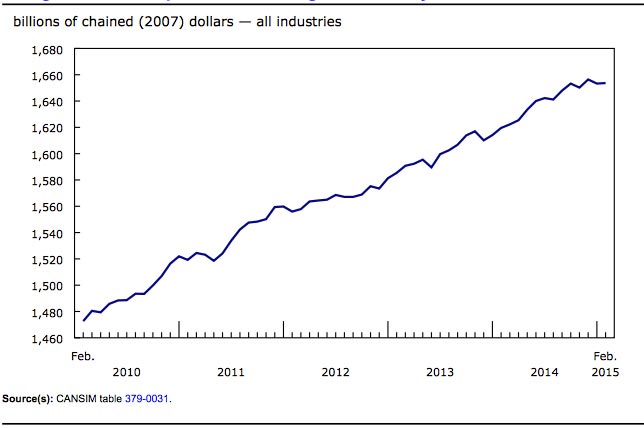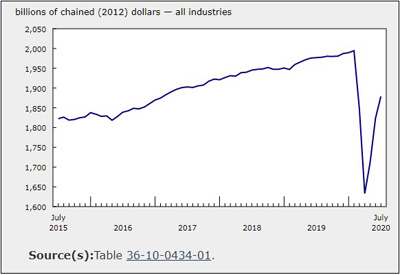Labour Force Survey, October 2022

November 15, 2022
Employment rose by 108,000 (+0.6%) in October, recouping losses observed from May to September. The unemployment rate held steady at 5.2% in October.
Employment rose in several industries, led by manufacturing, construction, and accommodation and food services. At the same time, it fell in wholesale and retail trade, as well as in natural resources.
The number of private-sector employees rose for the first time since March 2022. Employment was little changed among employees in the public sector and among self-employed workers.
Employment increased among both men and women in the core working ages of 25 to 54 in October. It was little changed among men and women aged 15 to 24 and those aged 55 and older.
Employment rose in six provinces, with gains concentrated in Ontario and Quebec.
Year-over-year growth in the average hourly wages of employees remained above 5% for a fifth consecutive month in October, rising 5.6% (+$1.68 to $31.94) compared with October 2021 (not seasonally adjusted).
After declining 0.6% in September, total hours worked increased 0.7% in October. Compared with October 2021, total hours worked were up 2.2%.
In October, nearly two-thirds (64.3%) of employees with wages above $40.00 per hour had received a raise in the previous year, compared with half (50.1%) of those with wages of $20.00 or less per hour (population aged 15 to 69; not seasonally adjusted).
More than one in three (35.3%) Canadians aged 15 and older lived in households citing difficulty meeting financial needs in October, up from one in five in October 2020 (not seasonally adjusted).
More than 1.7 million Canadians had hybrid work arrangements in October (population aged 15 to 69; not seasonally adjusted).
Employment increases in October, all in full-time work
Following four months of declines or little change, employment rose by 108,000 (+0.6%) in October. This increase—which was widespread across industries, including manufacturing, construction, and accommodation and food services—brought employment back to a level on par with the most recent peak observed in May 2022.
In general, monthly employment growth can be the result of several factors, including more people finding work after being unemployed or out of the labour force; fewer people leaving or losing their job; and population growth, including new working-age immigrants who start a job or a business after arriving in Canada.
All of the employment gain in October was in full-time work (+119,000; +0.7%), boosting year-over-year gains in full-time employment to 472,000 (+3.0%). There was little change in part-time employment, which held steady for a fifth consecutive month and remained at virtually the same level as it was in February 2020, before the COVID-19 pandemic.
Over the past 12 months, men (+3.9%; +341,000) have seen stronger growth in full-time employment than women (+1.9%; +131,000). In contrast, part-time work has increased for women (+5.7%; +126,000), while falling for men (-6.2%; -84,000). The decrease in part-time work among men is consistent with the tight labour markets observed in 2022, as men are generally less likely to work part-time than women, and more likely to do so only when labour market conditions prevent them from finding full-time work. In October, 15.8% of men working part-time would have preferred a full-time position, the lowest rate of involuntary part-time work among men for the month of October since comparable data became available in 1997 (not seasonally adjusted).
Employment rises for core-age population
The majority of the October employment increase occurred in the core working ages of 25 to 54. Building on an increase of 42,000 (+0.3%) in September, employment for this age group rose a further 69,000 (+0.5%) in October, driven by gains in full-time work. Increases were seen among both men (+45,000; +0.7%) and women (+24,000; +0.4%) in this age group. Compared with 12 months earlier, employment was up by a similar amount for core-aged men (+197,000; +3.0%) and women (+194,000; +3.2%).
Young men and young women aged 15 to 24 saw little net change in employment in October. Youth employment has been on a slight downward trend, declining by 43,000 (-1.6%) since May 2022, with gains among young men (+15,000; +1.1%) more than offset by losses among young women (-58,000; -4.4%).
Employment for both men and women aged 55 and older was little changed for a third consecutive month in October. On a year-over-year basis, employment was up by 98,000 (+5.4%) among older women in October, and was little changed among older men.
Employment rate at record high among immigrants
According to the 2021 Census of Population, immigrants made up the largest share of the population in over 150 years in 2021 (23.0%). Results from the Labour Force Survey (LFS) for October highlight the extent to which immigrants—that is, people who are or have ever been a landed immigrant or permanent resident—have succeeded in finding employment and filling a wide range of job vacancies across the country. First, the employment rate of immigrants aged 15 and older (62.2%) was at its highest level for the month of October since comparable data became available in the LFS in 2006. Second, among those who were admitted to Canada within the last five years, the employment rate (70.7%) was 5.6 percentage points higher than before the pandemic in October 2019 (three-month moving averages; not seasonally adjusted).
First increase among private sector employees since March
Most of the employment gains in October occurred among private sector employees, whose ranks increased (+74,000; +0.6%) for the first time since March 2022. As of October, the number of private sector employees was 349,000 (+2.8%) above its pre-pandemic February 2020 level.
Following an increase in September, the number of employees in the public sector was little changed in October. Compared with February 2020, the number of employees in the public sector was up by 392,000 (+10.1%).
The number of self-employed workers was also little changed in October. This was the third consecutive month of little change, with self-employment remaining flat on a year-over-year basis and 228,000 (-7.9%) below its pre-pandemic February 2020 level.
Unemployment rate holds steady, labour force participation increases
After declining in September, the unemployment rate held steady at 5.2% in October, 0.3 percentage points above the record low of 4.9% observed in June and July. The adjusted unemployment rate—which includes people who wanted a job but did not look for one—was virtually unchanged in October at 7.1%.
In October, the labour force—or the total number of people who are either employed or unemployed—was 110,000 (+0.5%) larger than in September. The labour force participation rate rose 0.2 percentage points to 64.9% in October, but fell 0.5 percentage points short of the recent high of 65.4% reached in February and March 2022.
Increases in the labour force were relatively widespread in October, with the largest gains occurring among young women (+30,000; +2.2%) and core-aged men (+25,000; +0.4%). Overall, labour force growth was almost entirely accounted for by the rise in the number of people who were employed (+108,000), while the total number of unemployed people was little changed.
Unemployment rate down among core-age men, up for young women
The unemployment rate among men aged 25 to 54 decreased 0.3 percentage points to 4.2% in October. The October decline partially offset the increase of 0.6 percentage points in August and brought the unemployment rate for this group back down to its May 2022 level, just above the record low of 4.0% observed in June and July 2022. Among core-aged women, the unemployment rate was little changed at 4.2% in October.
Among young women aged 15 to 24, the unemployment rate increased by 1.7 percentage points to 10.5% in October. While the unemployment rate among young women had reached a record low of 7.1% in June, it has trended upwards in recent months and was above its pre-pandemic February 2020 level in October. The unemployment rate was unchanged at 10.8% among young men in October.
The unemployment rate was also unchanged among both men (4.6%) and women (4.7%) aged 55 and older in October.
Long-term unemployment little changed
Long-term unemployment—the number of people who had been continuously unemployed for 27 weeks or more—was little changed in October. Long-term unemployment first returned to its February 2020 level in June 2022 and has hovered around a similar level in recent months. Expressed as a proportion of the total labour force, long-term unemployment remained at 0.8% in October, within the range of 0.8% to 1.1% observed in 2018 and 2019.
Young women and core-aged men post higher participation rates
The participation rate among young women returned to its pre-pandemic level, rebounding 1.3 percentage points to 64.4% in October after declining in September. The participation rate of young men (64.3%) was little changed for a third consecutive month in October, but was 1.3 percentage points higher than the recent low of 63.0% in July and on par with its pre-pandemic level.
Among men aged 25 to 54, the participation rate increased 0.2 percentage points to 91.6% in October, 0.7 percentage points below its recent peak in March 2022. The participation rate of core-aged women was unchanged in October (84.8%), close to the record high of 85.0% reached in May 2022.
The participation rate of people aged 55 and older was 36.2% in October, little changed from September.
Employment rebounds in construction and manufacturing; declines in wholesale and retail trade
The number of people working in construction rose by 25,000 (+1.6%) in October, with increases in five provinces including Quebec (+17,000; +5.9%) and British Columbia (+6,000; +2.5%). Despite this increase, employment in construction was virtually unchanged in October compared with March 2022, consistent with the latest data on gross domestic product showing slowing economic activity in the industry over a similar period.
Employment rose by 24,000 (+1.4%) in manufacturing, largely offsetting the decrease of 28,000 (-1.6%) recorded in September. Most of the increase was attributable to British Columbia (+12,000; +6.9%) and Nova Scotia (+3,700; +11.6%). On a year-over-year basis, employment in manufacturing was little changed.
The number of people working in accommodation and food services increased by 18,000 (+1.7%) in October, the first increase in the industry since May. According to the latest data from the Job Vacancy and Wage Survey, the industry had a higher job vacancy rate than all other industries in August.
Employment in professional, scientific and technical services rose by 18,000 in October (+1.0%), the third increase in six months. The number of people working in the industry has followed a long-term upward trend since June 2020, and in October was 297,000 (+19.3%) above its pre-pandemic level.
Employment gains were also recorded in “other” services (+18,000; +2.4%) and in public administration (+15,000; +1.3%) in October.
The number of people working in wholesale and retail trade declined by 20,000 (-0.7%) in October. Employment in the industry last increased in May and was little changed on a year-over-year basis in October. According to the latest data on retail trade, while retail sales increased 0.7% to $61.8 billion in August, advance estimates suggest that sales decreased 0.5% in September.
Following three months of little change, employment declined in natural resources (-6,800; -2.0%) in October, almost entirely due to a drop in Quebec (-6,100; -13.2%).
Employment up in six provinces in October
Employment increased in Ontario, Quebec, Prince Edward Island, Newfoundland and Labrador, Saskatchewan and Manitoba in October. There was little monthly change in the remaining provinces. For further information on key province and industry level labour market indicators, see “Labour Force Survey in brief: Interactive app“.
Following a decline in September, employment in Ontario increased by 43,000 (+0.6%) in October, primarily in part-time work. The unemployment rate in the province was little changed at 5.9%. Employment gains were led by accommodation and food services and professional, scientific and technical services. In the census metropolitan area (CMA) of Toronto, employment rose by 31,000 (+0.9%) in October, while the unemployment rate was unchanged at 6.3%. Among Ontario’s other CMAs, the unemployment rate ranged from 4.2% in the Ontario portion of Ottawa–Gatineau to 8.5% in Windsor (three-month moving averages).
In Quebec, employment grew by 28,000 (+0.6%) in October, the second increase in three months. The province’s unemployment rate fell 0.3 percentage points to 4.1%. Gains in full-time work more than offset a decline in part-time work. The largest employment gains were in construction; and finance, insurance, real estate, rental and leasing. According to the latest results from the Job Vacancy and Wage Survey, Quebec’s job vacancy rate continued to be among the highest across all provinces as of August (not seasonally adjusted). In the Montréal CMA, employment rose 23,000 (+1.0%) in October and the unemployment rate was 4.2%.
In Prince Edward Island, one of the provinces impacted by post-tropical storm Fiona in September, employment increased by 4,300 (+5.3%) in October, more than offsetting a September decline. The unemployment rate declined 2.9 percentage points to 5.4%.
Employment also rose in Newfoundland and Labrador (+3,300; +1.4%) in October. Despite more people working, the unemployment rate increased 0.8 percentage points to 10.3%, as more people in the province participated in the labour market.
Employment in Saskatchewan was up by 6,100 (+1.1%) in October, following six consecutive months of little change. The unemployment rate increased by 0.5 percentage points to 4.6% in October.
Employment in Manitoba increased (+4,600; +0.7%) for a second consecutive month in October, with gains in full-time employment. Manitoba’s unemployment rate and labour force participation rate remained on par with September.
In the Spotlight: hybrid work, wages, and financial difficulty
More than 1.7 million Canadians have hybrid work arrangements
In the past year, hybrid work—or the ability to work partly from home and partly from a location other than home—has emerged as an option for both employers and workers. In October, nearly 1 in 10 (9.0%; 1,746,000) workers reported that they usually work both at home and at locations other than home, up 0.4 percentage points from September and up 5.4 percentage points from January 2022. Also in October, the share of workers usually working exclusively from home was 15.8%, down 8.5 percentage points from the beginning of the year (population aged 15 to 69, not seasonally adjusted).
The share of workers with a hybrid arrangement increased in most industries from January to October, with the largest gains recorded in finance, insurance, real estate, rental and leasing (+14.7 percentage points to 21.7%), public administration (+11.8 percentage points to 15.8%) and professional, scientific and technical services (+10.8 percentage points to 17.9%) (population aged 15 to 69, not seasonally adjusted). These were industries that were able to respond quickly to pandemic-related public health restrictions by having a large proportion of workers shift to working from home. In all three of these industries, the increase in hybrid work has coincided with a decrease in working exclusively from home, suggesting a transition back to offices and other workplaces.
In contrast, the share of hybrid work was little changed in accommodation and food services, an industry where very few workers work from home (population aged 15 to 69, not seasonally adjusted).
As workers and employers continue to adjust to evolving economic conditions, data from the LFS will continue to shed light on the developing role of hybrid work in the Canadian labour market.
Lower-paid employees less likely to have received a raise in the last 12 months
In October, average hourly wages were 5.6% (+$1.68 to $31.94) higher than one year earlier (not seasonally adjusted). Despite average wages growing by more than 5% on a year-over-year basis in each of the past five months, they have not kept pace with inflation, which was 6.9% in September, contributing to concerns about affordability and the cost of living for many Canadians.
In the context of these concerns, new LFS data allow a deeper examination of which groups of workers are most likely to have received a raise in the past year, and suggest that higher-paid employees are more likely to have seen their wages keep pace with rising prices. In October 2022, among employees who had been with their employer for at least 12 months, about 6 in 10 (59.0%) had received a raise in the previous year. Nearly two-thirds (64.3%) of employees with wages above $40.00 per hour—the top 25% of employees in terms of wages—had received a raise, compared with half (50.1%) of those with wages of $20.00 or less per hour, who represent the bottom 25% of the wage distribution (population aged 15 to 69, not seasonally adjusted).
While unionized employees earn higher wages on average than their non-unionized counterparts, they were somewhat less likely in October to have received a wage increase in the past 12 months. Among employees with at least 12 months of tenure, 56.8% of those covered by a collective agreement had received a raise in the last year, compared with 60.1% of non-unionized employees (population aged 15 to 69, not seasonally adjusted). Wage gains among unionized employees can be delayed until collective agreements expire and a new round of collective bargaining begins.
Among employees who had been with the same employer for at least a year, the proportion who received a raise was among the lowest in agriculture (47.2%) and accommodation and food services (49.7%), two industries with average hourly wages below the national average. The proportion of employees who received a raise was also relatively low in health care and social assistance (53.6%) and educational services (50.3%) where the majority of employees are unionized.
In contrast, the proportion of employees who had received a raise was among the highest in professional, scientific and technical services (68.4%); finance, insurance, real estate, rental and leasing (68.2%); and manufacturing (67.7%), three industries where unionization is relatively low (population aged 15 to 69, not seasonally adjusted). For more information about unionization in Canada, see “Collective bargaining coverage rate, 1997 to 2021,” part of the Quality of Employment in Canada publication.
For some workers, changing jobs can lead to higher hourly wages. While the proportion of Canadians who changed jobs from September to October (0.6%) was in line with the average observed from 2017 to 2019 (0.7%), changing jobs in October 2022 was more likely to lead to a pay raise compared with earlier Octobers. In October 2022, 59.8% of employees who changed jobs secured a position with a higher hourly wage, up from the average of 50.5% observed in October from 2017 to 2019 (not seasonally adjusted).
Rather than changing jobs, some workers may work extra paid hours, including voluntary paid overtime, to help adjust to rising prices. In October, workers in utilities (23.2%), natural resources (17.6%), manufacturing (16.6%), transportation and warehousing (14.6%), construction (14.1%) and health care and social assistance (14.0%) were among the most likely to have voluntarily worked extra hours or overtime in the previous four weeks (population aged 15 to 69, not seasonally adjusted).
More than one in three Canadians aged 15 and older live in households citing difficulty meeting financial needs
In October, in the context of concerns over the cost of living, more than one-third (35.3%) of Canadians aged 15 years and older lived in a household finding it difficult or very difficult to meet its financial needs—in other words, to pay for transportation, housing, food, clothing and other necessary expenses. When the same question was asked in October 2020, during the first year of the pandemic, just over one-fifth (20.4%) of those aged 15 years and older lived in a household facing the same difficulties (not seasonally adjusted).
The risk of financial difficulties may be higher among workers in certain industries due to differences in wages or the prevalence of certain job characteristics, such as part-time hours. Among people aged 25 to 54, workers in accommodation and food services (43.2%), retail trade (42.4%), and transportation and warehousing (42.4%) were among the most likely to reside in households facing financial difficulty in October. Employees in accommodation and food services and retail trade have hourly wages below the national average and were among the most likely to be working part-time in October. These same two industries are a more important source of employment for several racialized groups than for the population as a whole, contributing to the fact that West Asians (50.7%) were among the groups of core-aged workers most likely to be living in households facing financial difficulty in October (not seasonally adjusted).
In addition to job characteristics that may affect wages, multiple other factors can contribute to whether a household experiences financial difficulty, including the number of household members who are working, and the presence of children or other dependents. Among workers aged 25 to 54 with at least one child aged 17 or less, those living in a single-earner family were more likely to be facing household financial difficulties in October (47.0%) than those living in a dual-earner family (37.6%) (not seasonally adjusted).
Looking Ahead
In May, employment in Canada reached a new high, and in the summer Canada’s labour market experienced record-high job vacancies and record-low unemployment rates. During the late spring and summer months, headline consumer inflation was at highs not seen in nearly four decades. More recently, employment declined or held steady for four months before rebounding in October. In the coming months, Statistics Canada will continue to provide insights into the evolution of the labour market and wider economic conditions.











